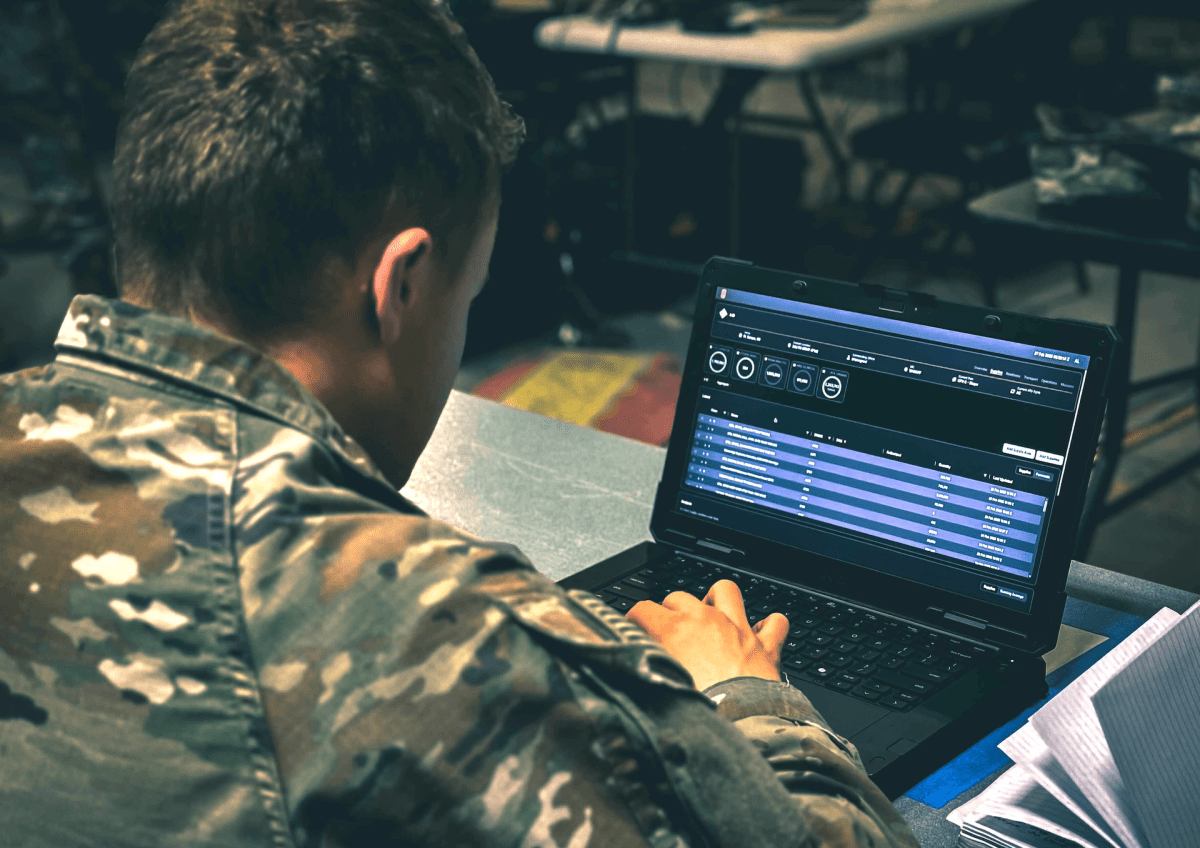Silicon valley doubles in defense as geopolitical tensions rise and appetite for modernization of warfare increases. And while many startup companies that collect great values Rune Technologies wants to process AI compatible software for military logistics.
“The US Army currently operates in Excel spreadsheets and paintings and in manual processes to carry out logistics operations,” founder David Tutttle told Techcrunch. “Logistics is never the sexiest part of the army. The focus of the technology industry is how we get things up? How do we build large weapon systems?”
Logistics, Tuttle says, usually lags behind innovation. And he should know. Earlier during his career, he was a field artillery officer in the US Army. Later, he served with a common command of special operations before working in Anduril, where he met his founder, former meta software engineer Peter Goldsborough. The two founded Rune after seeing how much modern warfare has changed the scale and the pace to maintain armies.
“Ukraine is a sad example of ammunition expenses, supplies consumption, and this type of thing in the conflict of almost interest opponents-you break people-centered and analogue-oriented processes,” Tutttle said.
Rune’s flagship products Tyros promises to transform manual logistics processes into intelligent supply networks that predict future needs, optimize current resources and enable decentralized functions – even from a detached laptop in the middle of the jungle.
Startup has just raised a $ 24 million series A round behind the Pilot broadcasts under the US Army and the US Marines. Round – which human capital led to participation in Pax VC, Washington Harbor Partners, A16z, Point72 Ventures, XYZ Venture Capital and Forward Played VC – goes to expand Tyros to other US army services.
Tyros has two large outlets. The first is its technical features as a logistics broadcasting system. Tyros relies on deep learning models, including time series models, to predict supply and demand property such as staff, transportation, equipment, food and other resources based on hundreds of environmental and supply variables.
TechCrunch event
San Francisco
And
27.-29. October 2025
“Logistics thinks not only,” What do I have about supplies? “But also,” What vehicles do I have to move it? “” Said Tuttle. “” What qualified crews do I have to drive that vehicle? “” What routes the vehicle goes over? ‘”And is it threatened?” “Is the bridge blown up the route that we have to do again?” “
Tuttle says that the Rune team, two -thirds of whom are veterans, also strives to integrate the generative AI with Tyros with a “generation of action”, which allows the system to melt massive information for troops in real -time combat environment so that logistics and commanders can ask for it. And while the LLMs have progressed rapidly, Tyros still depends on the traditional mathematical optimization of certain tasks – such as the design of aircraft loads based on cubic volume and other restrictions – where exact calculations are necessary.
Tyros’s other large hook is its primary architecture, which overrides the need for a continuous connection to remote servers, allowing the system to operate independently and synchronized when the communication is returned. In other words, Tyros is a “cloud but not a cloud request”.
“From the point of view of the cloud environment today, building software is very different architecturally than if I literally build software in the jungle of this laptop in the Philippines with Marines or Soldiers,” Tuttle said.
Tyros is also cloud and hardware egnostic; It can work on the record program of the record program, which is currently used by the army to facilitate integration, per TUTTLE.
The founder stated that Rune’s supporters include leaders of both Palantir and Anduril, where he sees a lot of partnership opportunities. Rune was recently selected for the Palantir Startup and announced his integration earlier this year with Palantir Defense OSDK (Ontology Software Development Kit) to enable automated logistics from a tactical edge to a strategic floor.
The automation of the shaft between tactical intelligence and strategic decision -making is Rune’s long -term vision.
“I’m not just worried about maintaining this for the next 30 or 60 days,” Tuttle said. “I am worried about how this can affect production decisions back to the defense industry base. It is the vision we want to get to. How to drive tactical levels to an operational level, strategic level, possibly to produce artillery shell production?”
Clarification: Peter Goldsborough volunteers under the US Marine Cybra.
Do you have a sensitive tip or confidential documents? We report the internal activities of the AI industry – companies that form their future to the people that their decisions affect. Contact Rebecca Bellan at rebecca.bellan@techcrunch.com and Maxwell Zeff at maxwell.zeff@techcrunch.com. For safe communication, you can contact us via signal at @Rebeccabellan.491 and @mzeff.88.
